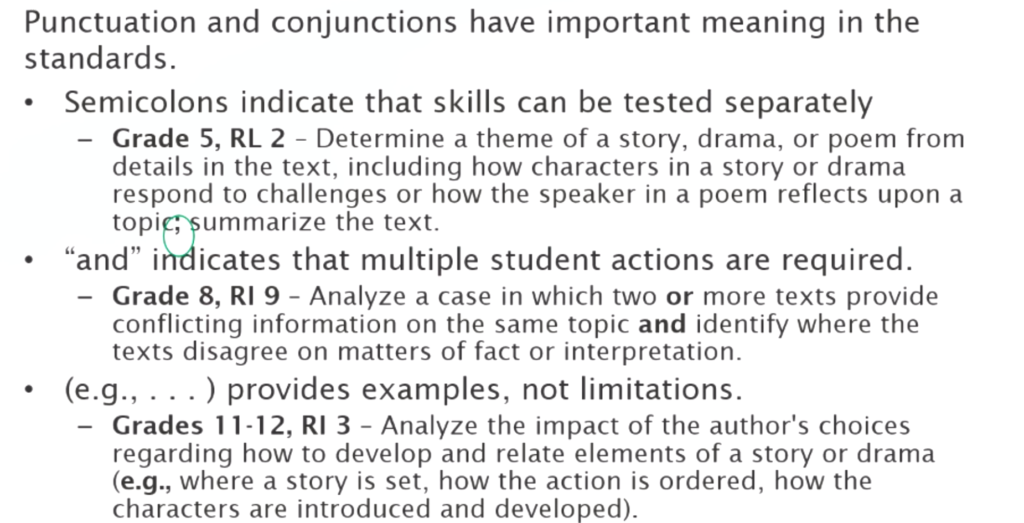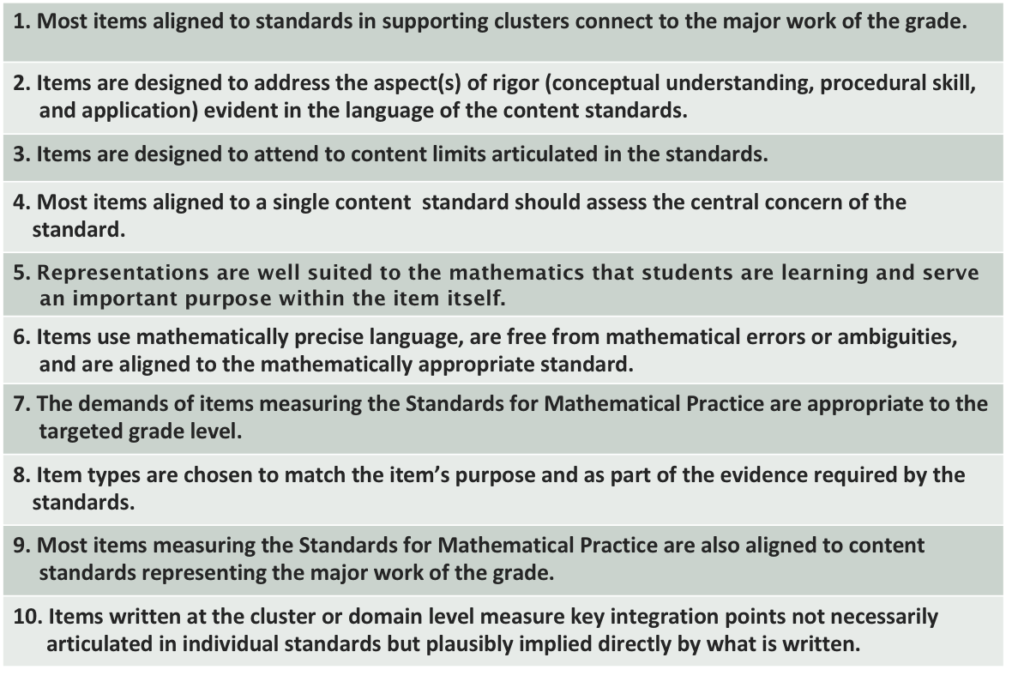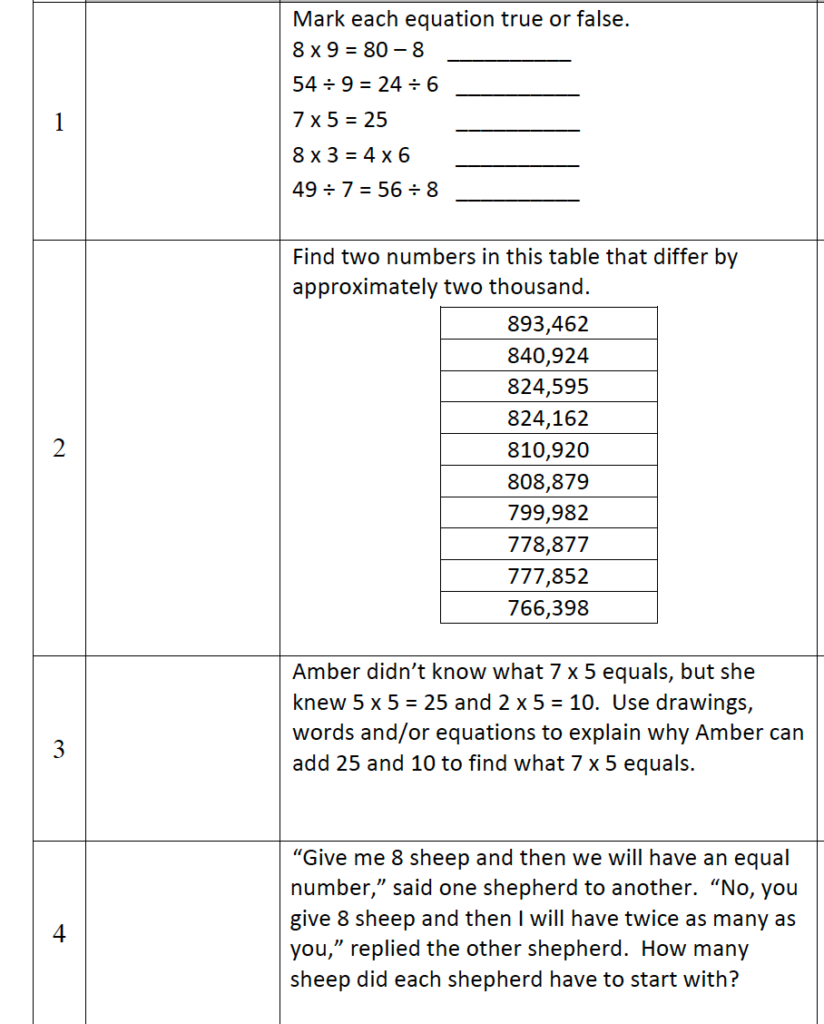I want you to think back to when you were seven or eight-years-old. You’ve just watched the Macy’s Parade; Snoopy is flying high above Central Park West. The most amazing smells are coming from the kitchen: a golden-brown turkey, buttery mashed potatoes, pumpkin pie with extra whipped cream. Your grandmother hollers to you to “go start setting the table!” As you lay out the plates and silverware for everyone, your eyes peek over at the adult table—you wish that you could sit there that year!
Five years pass. You’re finally invited to the grown-up table. Before dinner, you talk to relatives about what to expect and how to behave. Nothing horrible happens. Phew!
Another few years pass. It’s a bit easier to sit among the grown-ups, but you still feel concerned about whether or not you might break the gravy boat or whether you should be passing things to the left or right, even though you have done it before.
So what does this Thanksgiving table metaphor have to do with assessment? It’s time for true confessions: assessment, for many of us, is like sitting at the adult Thanksgiving table. Even though we’ve eaten there before (or in this case, written assessments before), the truth is that we’re in an evidence-based world where the stakes are high–and we are afraid because writing assessments doesn’t feel like it’s in our wheelhouse as classroom educators.
The juicy gossip is that I am afraid to be at the assessment table, too, even though I am now regularly asked to sit there. This is relatively ironic if any of you know my background and have read either of these two posts (Post 1 or Post 2). Even though my background may be strong, I still have a hint of fear when it comes to revising that next assessment item. I continually ask myself, “Why should people be looking at me for answers? What do I really know about assessment? How can I help support teachers with the assessment practices in their classrooms?” I still am not over the fear of breaking that proverbial gravy boat, even though I should be relatively confident working with assessment.
I know many of you out there are probably like me. Yet, in order for us to move past this fear we need to show up to the table.
So how do you do that as a classroom teacher? You start by preparing yourself, just like I did as a classroom teacher. You feast your eyes on this five-course meal, complete with dessert.
Course 1: Appetizers — First, learn how to read the standards. Assessments are based on what type of inference we wish to make about student knowledge. Thus, make sure you are familiar with the following signals within the standards since all assessment questions need to align to the standards.
Course 1.5: Drinks — While you’re nibbling on cheese and crackers, help yourself to a nice beverage: something that helps you focus on the principles of assessment. Start by checking out the Assessment Item Alignment modules for ELA and Math on the Achieve the Core website that highlight key characteristics.
As you’re reading through, pay careful attention to the 10 principles that exist in math and how they relate in your state.
In my state, these principles come down to making sure that we have a balance of problems that are at different Depth of Knowledge (DOK) levels, that problems funnel through the Major Work of the Grade, and that we have a balance of problems that address procedural skill and fluency, application, and conceptual understanding. Test your understanding with a sample activity found below—which element of Rigor is best represented?
In terms of ELA, do your questions help support major understanding of the text, target tier 2 vocabulary, and require evidence from the text? Check your understanding of these here by going through this aligned assessment and asking yourself, “How does each of these questions help get at the instructional Shifts and reflect the principles in the right-hand column below?
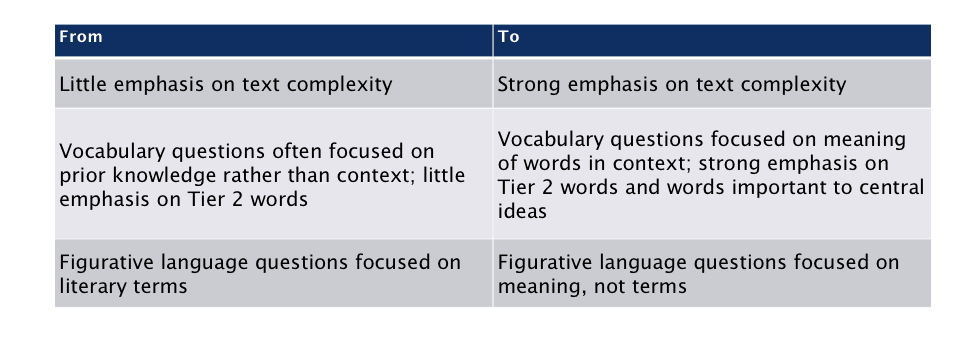
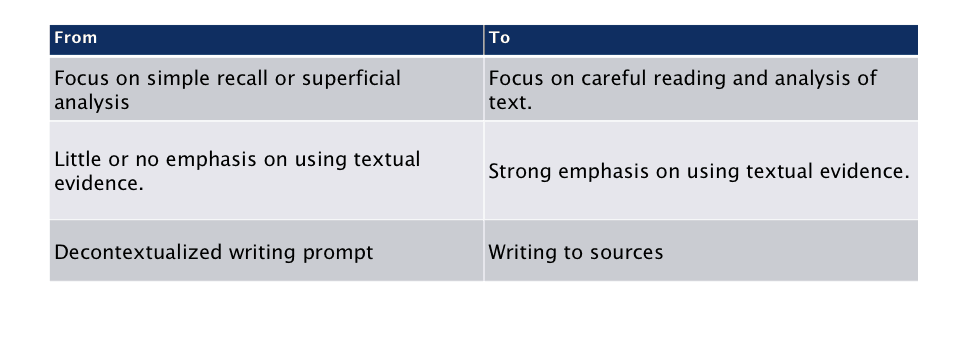
 Course 2: Haven’t had enough crostini yet? Remember, it’s the holidays, so you have to pregame it well. Check out either one of these that will help you speak “psychometric”: Popham’s The ABC’s of Educational Testing: Demystifying the Tools that Shape our Schools (2017) or Measurement and Assessment in Teaching (2012) by Miller & Linn. These works are some of the clearest that I have read that help get at misconceptions related to assessment. As you’re reading, think about whether you can explain the difference between reliability and validity. Can you explain why we just can’t use the SAT or ACT to measure the CCSS or your state’s version of these standards? Do you understand how claims work? If you don’t have time for books, try this glossary of terms to help you make sense of things you are hearing.
Course 2: Haven’t had enough crostini yet? Remember, it’s the holidays, so you have to pregame it well. Check out either one of these that will help you speak “psychometric”: Popham’s The ABC’s of Educational Testing: Demystifying the Tools that Shape our Schools (2017) or Measurement and Assessment in Teaching (2012) by Miller & Linn. These works are some of the clearest that I have read that help get at misconceptions related to assessment. As you’re reading, think about whether you can explain the difference between reliability and validity. Can you explain why we just can’t use the SAT or ACT to measure the CCSS or your state’s version of these standards? Do you understand how claims work? If you don’t have time for books, try this glossary of terms to help you make sense of things you are hearing.
Course 3: Still not confident yet? Unbuckle that buckle, have a second shrimp cocktail, and check out the CCSSO guidelines for writing assessments — learn these criteria for what aligned assessments look like. Apply them to one of your state-released tests. Do you see what the psychometricians see?
Course 4: Now it’s time for main course–volunteer to be on your state-level assessment writing committees. Trust me, we want people who are learning with us, because it helps to write better questions when we have to explain why a question was crafted the way it was. While you’re there, listen, watch, and continue to dialogue with others. You might be intimidated but remember, there are days where we all struggle—a great multiple-choice question can take upwards of an hour to write!
Course 3.5: Not quite ready for the main course yet? Back up and enjoy some soup first–try the professional learning activities that I describe in this blog Post 2. You’ll be amazed at how much you already know about assessment.
Course 5: For dessert, I encourage you to read these articles (specifically modules 8 and 9). They will help you process what you experienced during the main course. As you read, start to think about your own content area and how to improve the questions you are using to assess your students. Physically write them out and then share them with others for feedback and support.
Bonus Course (It is Thanksgiving after all!): An aperitif after dinner? Why not? While it’s important that we write reliable tests that allow us to make valid interpretations about kids’ knowledge, it’s also important that you explore how you are assessing within your classroom, school, or district. Consider exploring these digital assessment techniques. Not only will these help you get into the mindset of your students, but they will also allow you to help adjust instruction appropriately. If nothing else, they are just fun techniques to use in the classroom!

















